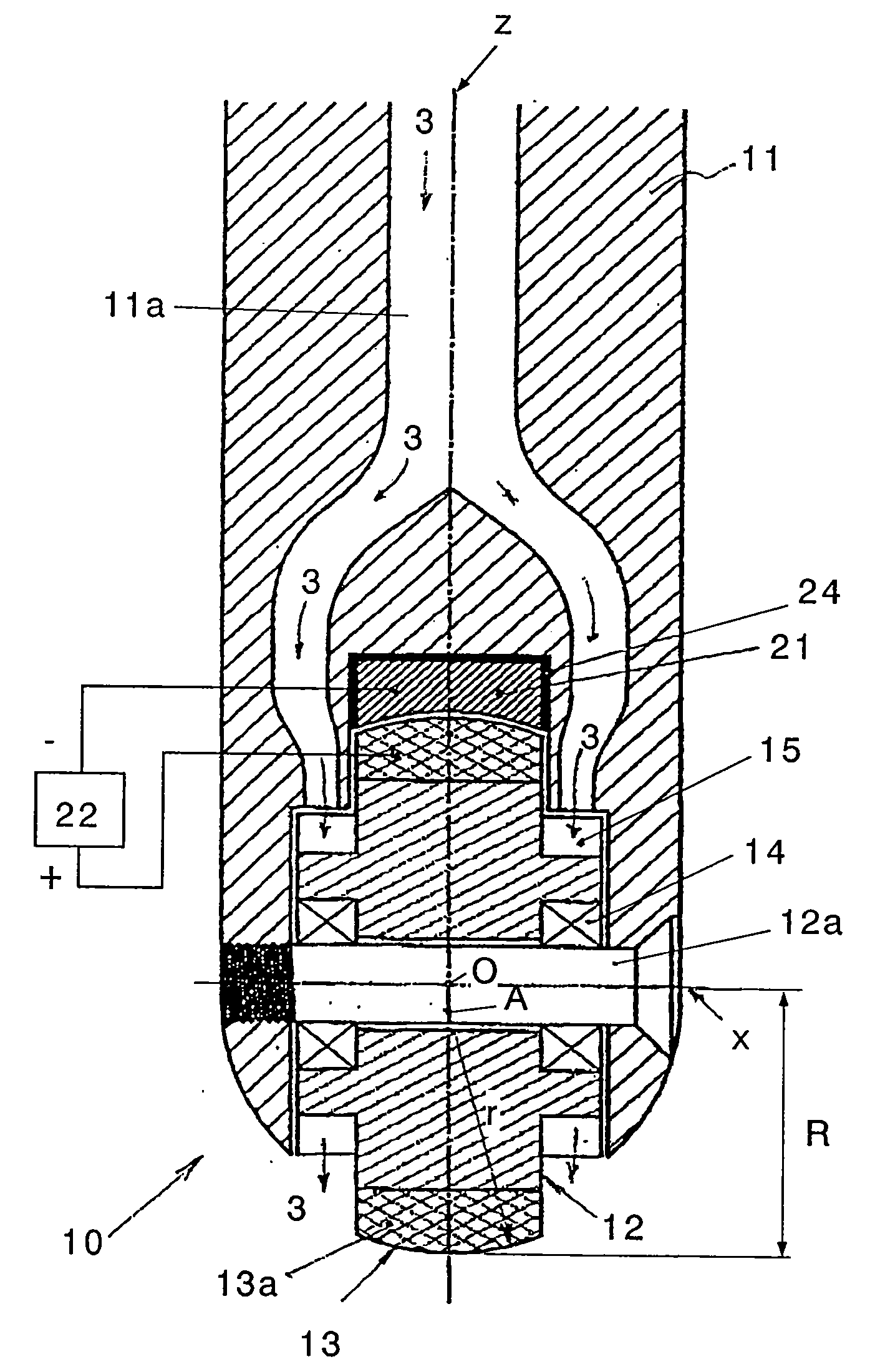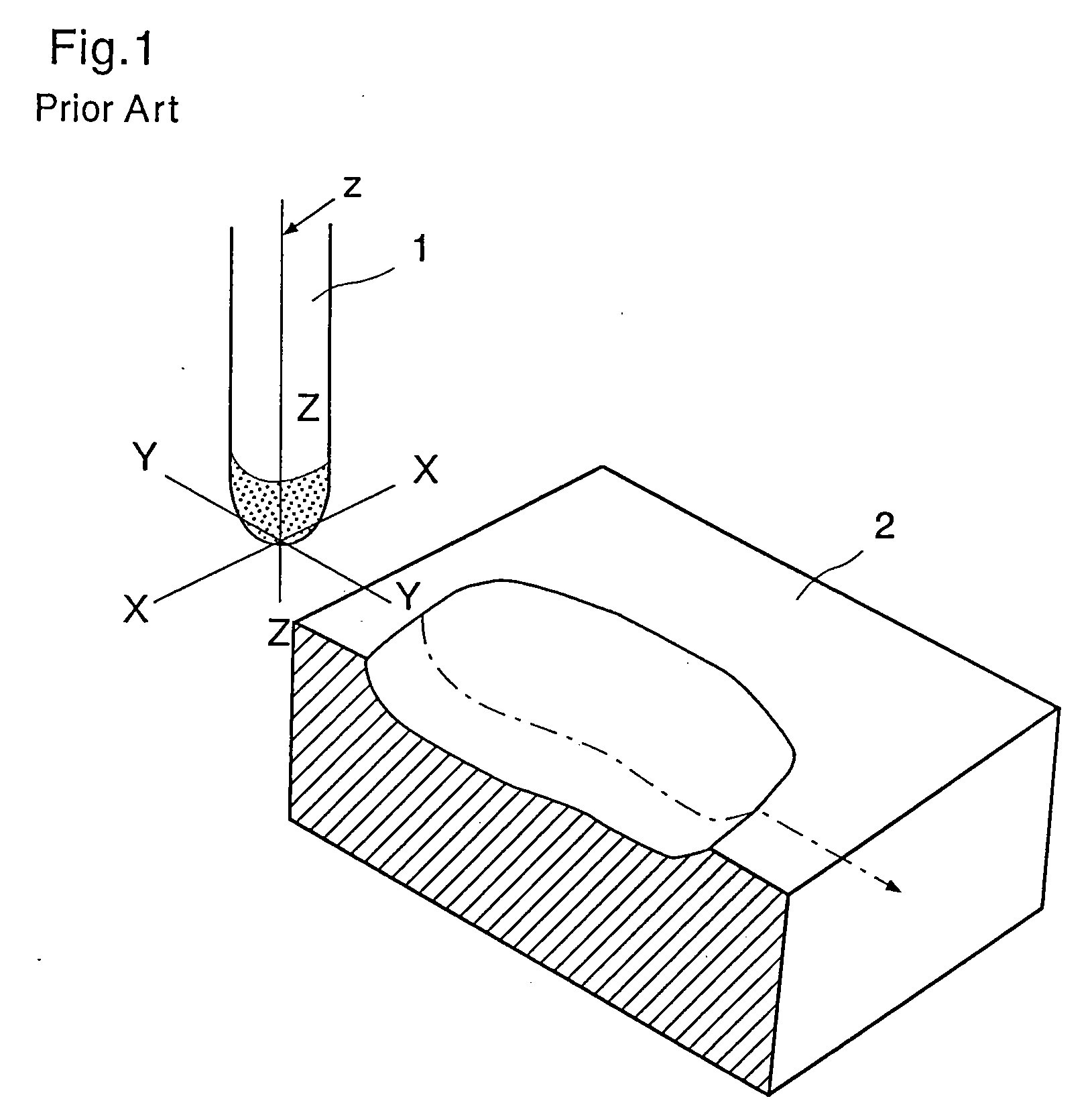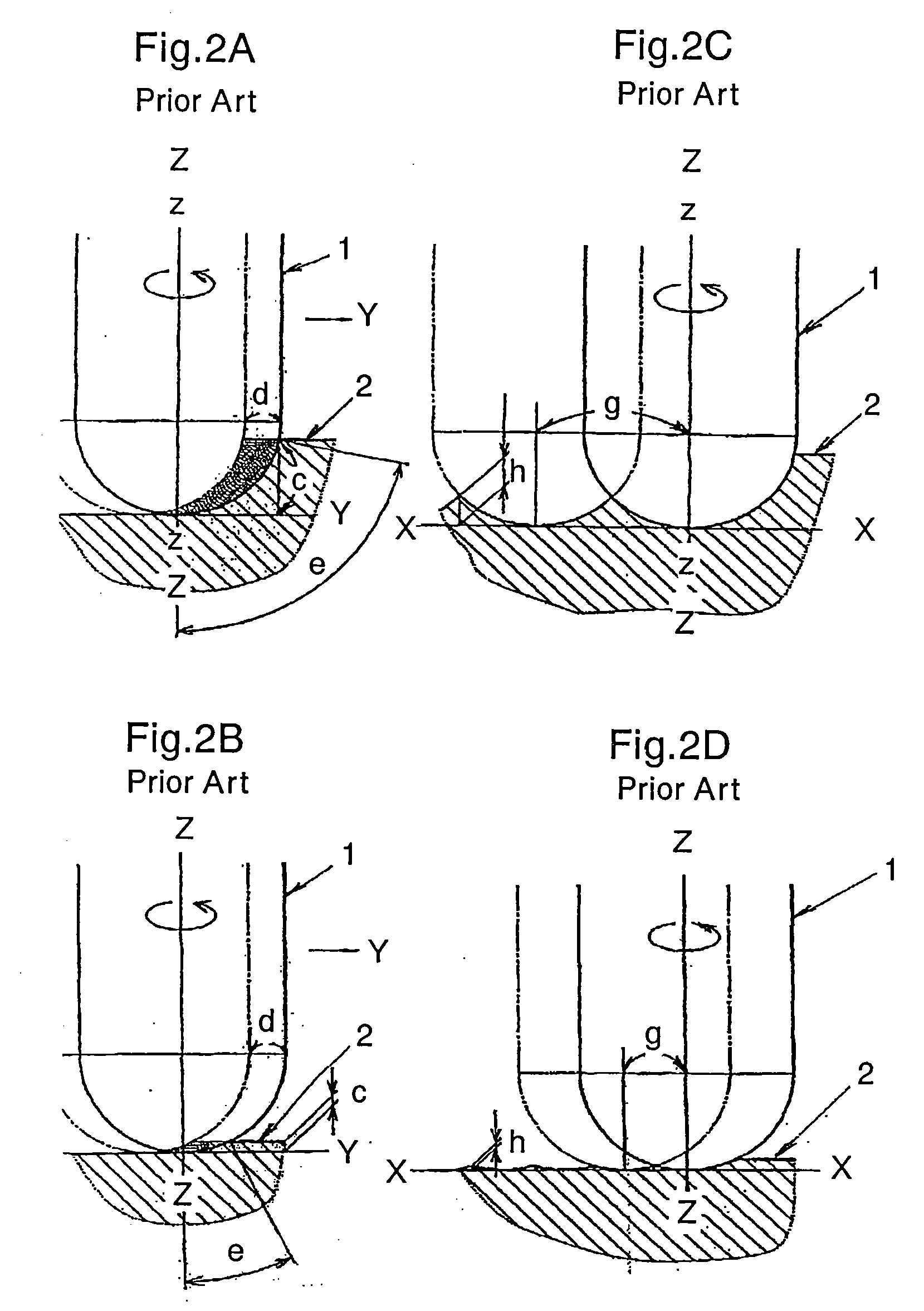Free curved surface precision machining tool
a technology of precision machining and curved surfaces, which is applied in the direction of manufacturing tools, milling cutters, grinding machine components, etc., can solve the problems of increasing the number of axes, complicated and difficult type of program creation, and inability to perform high-precision and high-quality machining, so as to maintain the sharpness of the tool machining section, the effect of constant moving speed and driving torqu
- Summary
- Abstract
- Description
- Claims
- Application Information
AI Technical Summary
Benefits of technology
Problems solved by technology
Method used
Image
Examples
first embodiment
[0082] Referring to FIG. 11, there is shown a diagram of a profile of roughness of a surface machined by the free curved surface precision machining tool according to the present invention. Referring to FIG. 12, there is shown a macrophotograph of the machined surface.
[0083] The work is made of steel for a molding die (stainless steel HRC 42) and the grindstone is a cast iron bond CBN#4000 grindstone (20 mm in diameter and 8 mm in thickness). The work was machined under the machining conditions listed in Table 1: a spindle rotation speed of 1500 rpm, a feed speed of 100 mm / min, a pitch of 0.1 mm, and a depth of the cut of 10 μm / pass.
TABLE 1Machining condotionsspindle rotation speed1500rpmfeed speed100mm / minpich0.1mmcut depth10μm / pass
[0084] The surface roughness after the machining is 0.0188 μmRa or 0.1392 μmRy as shown in Table 2. From this result, it has therefore been confirmed that an excellent mirror surface can be obtained by using the #4000 grindstone in the free curved sur...
PUM
| Property | Measurement | Unit |
|---|---|---|
| diameter | aaaaa | aaaaa |
| diameter | aaaaa | aaaaa |
| depth | aaaaa | aaaaa |
Abstract
Description
Claims
Application Information
 Login to View More
Login to View More - R&D
- Intellectual Property
- Life Sciences
- Materials
- Tech Scout
- Unparalleled Data Quality
- Higher Quality Content
- 60% Fewer Hallucinations
Browse by: Latest US Patents, China's latest patents, Technical Efficacy Thesaurus, Application Domain, Technology Topic, Popular Technical Reports.
© 2025 PatSnap. All rights reserved.Legal|Privacy policy|Modern Slavery Act Transparency Statement|Sitemap|About US| Contact US: help@patsnap.com



